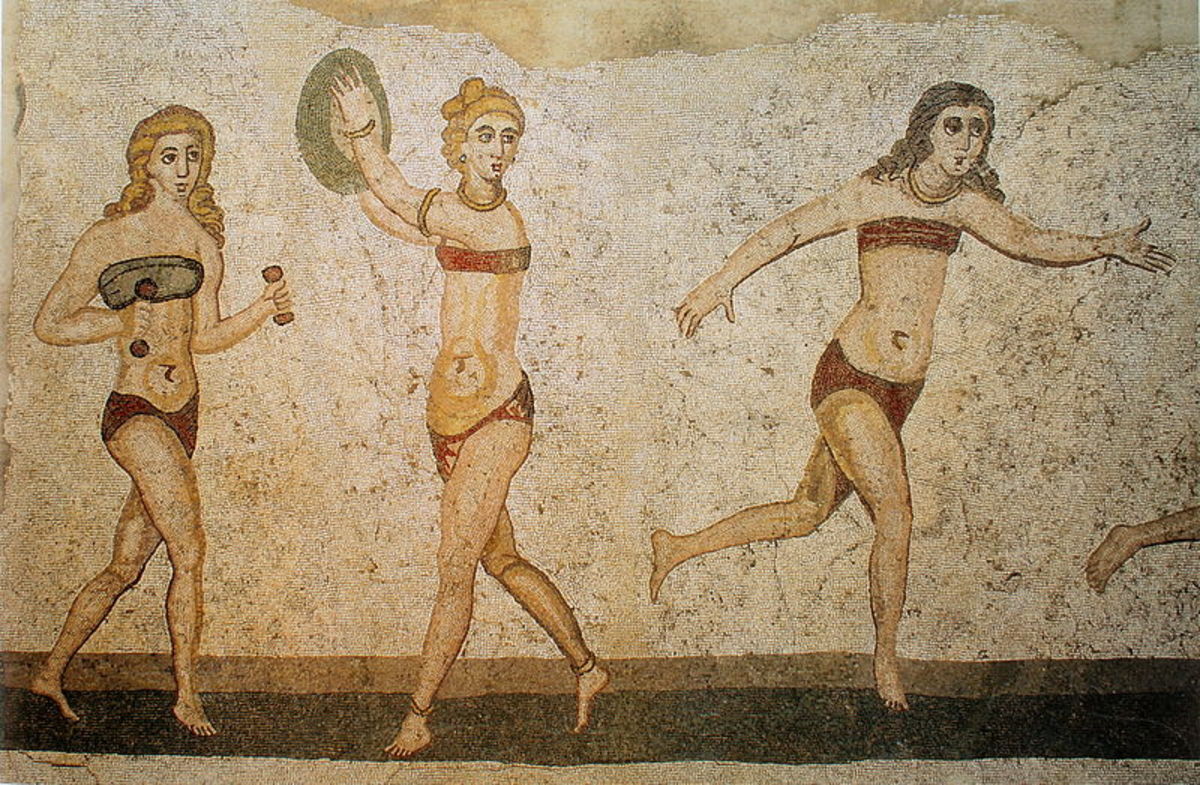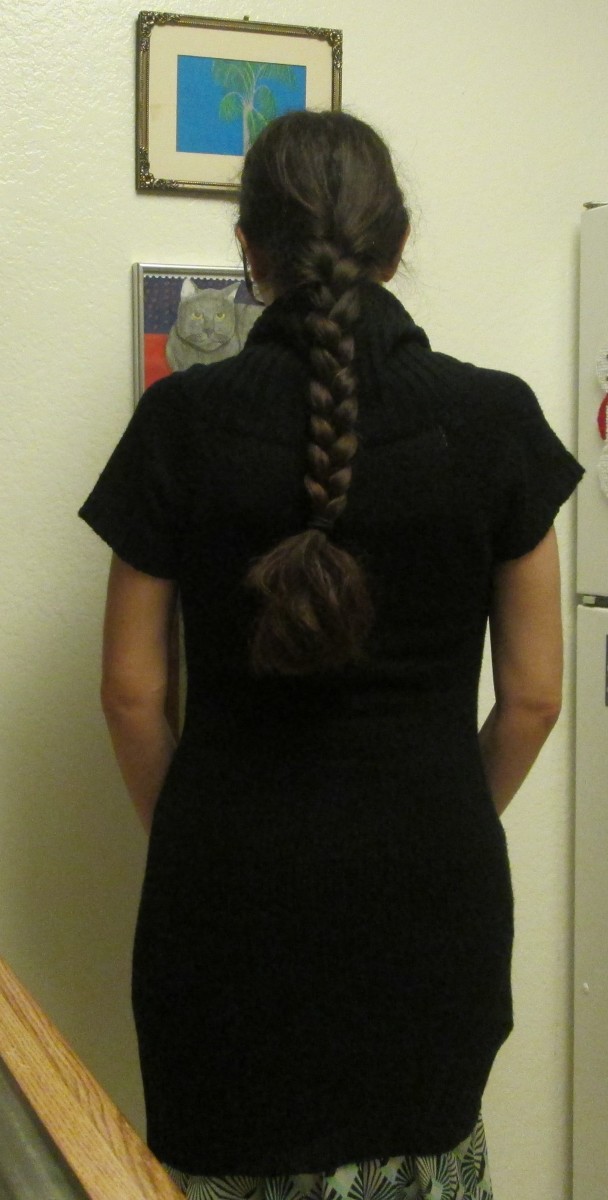Woman Trapped In the Eye Of The Beholder [Part 2]

Are we what we wear?
One’s personal dress sense does not stand-alone.
It attracts the eye of the beholder.
What the beholder notices does not stand-alone either.
It fires up emotions in the heart of the observer. These emotions trigger thoughts, and these thoughts yield subjective conclusions about the person living and breathing beneath these clothes. These thoughts often lead to an action of one sort or another. Even inaction is karmically an action.

One’s dress sense is not all that personal.
Like all other items we buy as consumers, no differently than the products we drop in our shopping caddy, the clothes and accessories we buy are fed to us by juggernaut industries that need our money to make more of their own money.
Our wardrobe choices are fed to us by the fashion industry which is itself supported by peripheral industries such as that of women's interest magazines, always considered the bread-and-butter of publishing, the music and film industries and ubiquitous, self-serving celebrity posturing.
No differently than the meat and dairy industries that stop at nothing to maintain billions of us in questionable eating habits, the fashion industry is not concerned by how we look in clothes that appear designed for teenagers and women endowed with a lithe, taut body, which is increasingly rare these days.

Free-ranging free will
However extensive it might first appear, the range of fashion-dictated clothes, bags, shoes and accessories is in fact quite narrow which is why anyone in a crowded room will quickly conclude who follows the current trends and who does not.
Unless we buy whole organic food and strictly vintage clothes from opp shop – or sew our own according to the whims of original creativity - we are a captive, biddable audience.
Our free will is as limited as space ‘free-ranging’ chickens have in our backyards.
When it comes to the dress code imposed by religious dogma, one of its central aspects is that options to personalise are even more limited.
As most uniform codes, religious dress codes focus on the concepts of personal anonymity and non-distraction of others.
That is, non-distraction from the focus of prayer when inside a place of worship and non-distraction from coherent thoughts when going about one’s daily business.
In some traditional and orthodox religious milieus, both men and women are still required to wear modest clothing so as not to distract themselves and others around them.

Such an imposition regarding one’s choice of clothing presumes that we, grown-ups, are inattentive beings, keen to find an opportunity to escape the rigour of concentration; that we are as unable to remain impassive to eye-candy as we are to a box of chocolate or a serving of hot french fries.
The subtext, then, is that our self-control as adults is, in fact, as limited as that of pre-schoolers.
Though such an assessment of our attention deficit might seem harsh, an honest look at our evermore permissive culture and our general lack of stoicism in a world filled with sensory stimulation and instant gratification confirm the conclusion.
Walk in humility
So, in the controlled environment of traditional religious spaces, men are required to dress conservatively in loose pants, simple shirts and modest footwear with or without skullcap, depending.
Prayer time is not the time to show off one’s coolest gear.
Equally, women are required to wear garments that cover their arms and legs, feet inside simple footwear. Understandably within that context, make-up is discouraged, as the sole purpose of make-up is to sexualise the face to better attract the eye of strangers which, it is believed, would upset their concentration in prayer and, perhaps, leading them into lustful thoughts.

Unlike men, women are also required to cover their entire head since hair, regardless of length, texture and colour has been ruled to be an explicit source of sexual distraction for men.
And, in this lies the odd conclusion that modern men, still unable to manage the sexual nature of their emotions, thoughts and actions, still have no qualms coercing women to shield them from having to exercise moral rigour – even when in their place of worship.
From wigs to scarves and hats, married Orthodox Jewish women are allowed several options to hide the natural hair that may otherwise create havoc in the minds of passing or praying men.
The mantilla, lace veil, once favoured even by moderate Catholic women in Europe up to the 60’s, might be poised for a revival but Orthodox Christian women have always been required to wear a headscarf often tied on the nape of their neck.
Christian preoccupation with hair
The source of Christian preoccupation with women’s hair might have its source in Paul’s epistle to the Corinthians.
‘Judge for yourselves,’ he says in 1 Corinthians 11:13–15 ‘Is it proper for a woman to pray to God with her head uncovered? Does not even nature itself teach you that if a man has long hair, it is a dishonour to him, but if a woman has long hair, it is a glory to her?
For her hair is given to her for a covering.’

Hair is in the air
The fact that Jesus has always been portrayed with long hair notwithstanding, it is unclear why Paul thought that long hair on a man’s head equated damming dishonour but glory on a woman’s.
Yet, this leap in logic led Paul to conclude that since long hair ‘naturally’ covered a woman’s head [but … not a man’s?] it was natural for her to cover it herself with a cloth while praying.
Complicating things further, in 1 Corinthians 11:4-16, Paul added, ‘… a woman brings shame upon her head if she uncovers it to pray or prophesy; she is no better than the woman who has her head shaved.
If a woman would go without a veil, why does she not cut her hair short too if she admits that a woman is disgraced when her hair is cut short or shaved, then let her go veiled. Judge for yourselves; is it fitting that a woman should offer prayer to God unveiled?
Does not nature itself teach you that, whereas it is a disgrace to a man to wear his hair long when a woman grows her hair long, it is an added grace to her?
That is because her hair has been given her to take the place of a veil.’
So, then, the question begging is why go on urging women to wear a veil on top of that natural ‘veil’ given to her by God?
Decades earlier, Jesus is said to have said, ‘But I say unto you, that whosoever looks on a woman to lust after her has committed adultery with her already in his heart’.
And so, rather than that serving as an admonishment to men to take charge of their thoughts and actions, it became twisted as women’s responsibilities to protect men, all men, against the weakest aspects of themselves.

As sensual as a flock of goats
Of course, predating Jesus’ and Paul’s thoughts by a few centuries was the Torah and later the Talmud. Another leap in reasoning had the rabbis decide that line 4:1 in Song of Songs, ‘Your hair is like a flock of goats,’ reflected the irrepressible, sensual nature of women’s hair.
From one thought to the next, prominent rabbis who made it their lives’ work to decode the Talmud, agreed that a woman’s full head of hair ranked very high on the erotic scale. Its display along with the merest hint of breasts had to be confined to the ‘private sphere’.
Why not simply look the other way?
When it comes to Muslim women, the requirement that they, too, should cover their hair is found in the Qur’an, surah 24:30–31.
It makes explicit the need for a long hijab, not merely a headscarf.
‘… and not display their beauty except what is apparent, and they should place their khumur over their bosoms,’ but the reference to ‘what is apparent’ that can be exempted from covering, though cryptic, can be taken to refer to the face.
The words of the Prophet Muhammad also command men to ‘restrain their eyes and guard their private parts. That is purer for them. Surely, Allah is well aware of what they do.’
The Prophet also admonished them to ‘Be chaste, and women will be chaste as well.’
Interestingly, there is no mention of women having to cover their heads in Hindu sacred texts.
The widespread practice of wearing a veil in India stems from the notion of personal safety and the assumption that a woman whose head and body are completely covered is less likely to come to grief at the hand of men.
So, it seems that then as now, from aeons back to the present, in every nook and cranny of the globe, men, lacking emotional resilience, rely on women to keep their testosterone surges under control.
That said, a quick look at the statistics of rape in all corners of the globe, even in those where women live their lives covered from head to toes, indicates that men’s passive strategy of blame-shifting has failed women miserably.
Equally, it confirms that women’s passive acceptance of men’s self-serving imagination [and interpretations] of their god’s decree has failed them miserably.

© 2018 Carole Claude Saint-Clair







